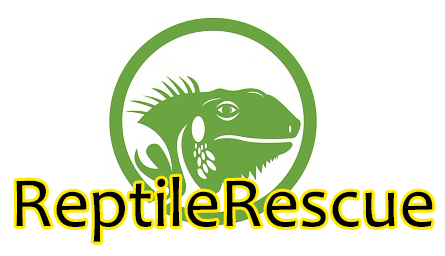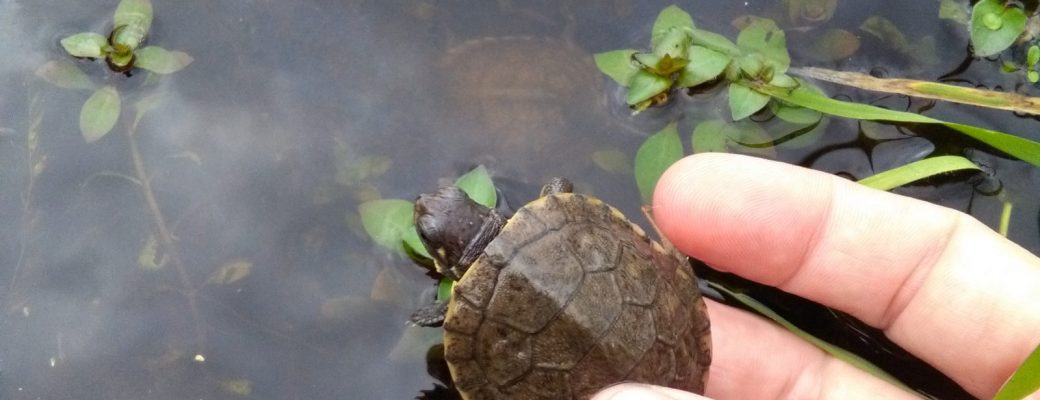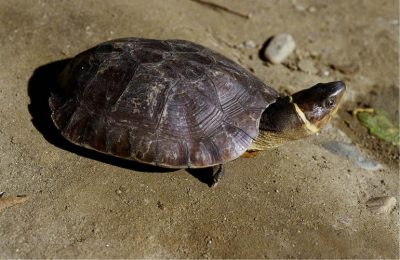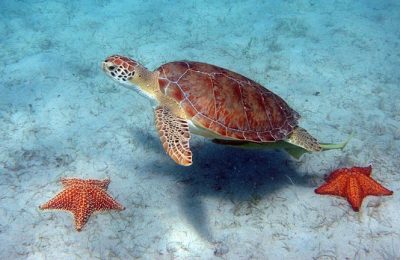Tortoises are lovely creatures of the wild. Some people have domesticated and kept them as pets;…
Turtle Identification
Guide to Identifying Types of Turtles Species
You will love turtles as pets if you do not already own one. They are not only gorgeous, but most of their species are also gentle. They do not require as much care as most other pets would, and when well-cared for, they can live for long.
There are, however, many different species of turtles. We can classify them according to the environments they live in, the foods they eat, or their physical appearances and structures. If you are looking to get a turtle, then knowing and understanding their species will be critical.
While you will come across most in rivers, some live in ponds and others, lakes. They have temperature preferences, and it is good to always keep the ranges in check for their ultimate good health. They also love to bask and will thus appreciate a spacious platform with sufficient light.
Turtles are generally omnivores and will feed on both plant and animal matter. However, as they grow, they could use more protein in the animal matter; as they advance from youths to adults, some can try leafy vegetables and other aquatic diets suited for turtles.
Depending on their sizes, which can be very large, they need a spacious environment to move about or swim freely. While basking is an essential part of their lives, turtles also love the water a lot, and most will spend more time in it than out. It would be best if you got a suitable enclosure for breeds that prefer land to water.
Their enclosures or tanks should also be well-maintained and provide clean and fresh water. A healthy environment is essential for happy growth and proper development. Some turtles are easier to maintain than others due to their small sizes. If this interests you, you should definitely check out our page dedicated to small turtles.
Therefore, to provide the best care, it is good that you get well-versed with the available breeds and what would work for each. Also, note their distinct characteristics and which turtle would best suit you or the home you intend to provide.
Related:
So, which are the common species of turtles that you should expect to come across? Below, we will look at some of them, highlighting the simple features and appearances that distinguish them. We will also point out anything that stands out with a species. They are:
Freshwater turtle
You will come across many turtles that love to spend their time in freshwaters. This could be due to the regulation of their body temperatures and even for food. Unlike most other species, these are smaller and can either spend all their time in water and their surroundings or most of it.
You may come across turtles that can live for months underwater, such as the Japanese pond turtle, which prefers ponds and streams. Whatever the turtle loves would be the best condition to provide.
Other types of these turtles include the cooter turtle, sliders, map turtles, softshell turtles, and even snapping turtles. You can find the box turtle in freshwater, but it prefers dry environments over aquatic life and thus does better in enclosures or free in the wild.
Sea turtles
As the name suggests, these turtles are more dominant in seas. Due to their environmental adaptations, you will find them to be large and entirely aquatic; so, they will spend all their lives in the water. Nesting, nevertheless, gets them out but not for long.
They have a distinct physical appearance—their feet are flippers. It makes sense that they are suited for swimming and maneuvering their ways in the deep waters. Some of these turtles include the Atlantic ridley, hawksbill, and leatherback sea turtles. The baby sea turtle might just be the cutest thing on Planet Earth.
Land tortoise
Unlike the two species we have looked at, land tortoises live on the land. You may know them for their heavier shells, which are not as streamlined. Because they have to walk on the ground, their feet are adapted to suit a variety of environments and are thus elephantine and short.
They cannot move as much as the two other types we have looked at due to the land’s nature and their weighted bodies. Some of them include the red-foot, Indian, Russian, and also Greek tortoises.
Identifying Turtles
If you are looking to get a turtle for a pet, you will have to learn how to identify them. Some varieties may not be well-suited for indoor enclosures, while some, such as box turtles, will do better in terrariums than tanks. The following steps of identification should help:
- Tortoise, sea, and freshwater turtles
Sea turtles have an adaptation to their environments and swimming life. They will, therefore, have flippers for their front limbs. They are also large, to further suit the sea life and for the same reason, you will not easily come across them.
Freshwater turtles and tortoises have feet for their limbs. A freshwater turtle will have flat feet that can be webbed, which suit both aquatic and land environments, enabling them to swim and move on the ground when need be.
Tortoises, on the other hand, have elephant-like feet to suit their dry land environments. Since they do not swim, their bodies are heavy, and they further have clawed feet to make their movements more comfortable.
Sea turtles
To tell a leatherback sea turtle, you may note that it does not have scutes. An Atlantic ridley sea turtle, on the other hand, has five pleural scutes and a squarish first vertebral, poring in its bridge scutes. An endangered sea turtle species, the green or black sea turtle, has a triangular first vertebral scute and four pleural scutes. Its head has a pair of prefrontal scales.
Another endangered sea turtle species is the hawksbill sea turtle, which also has a triangular first vertebral scute, four pleural scutes, and on its head are two pairs of prefrontal scales. Loggerhead sea turtles have a first vertebral scute, five pleural scutes, and three to four inframarginal scutes on the bridge. More, is that on its dorsum is a large oval plate.
Land tortoises
Land tortoises are perhaps the most common species since they dwell mostly on land. They are not suited for swimming or moving at more incredible speeds than sea and freshwater turtles. Due to their heavy shells, they move slowly and have sturdy feet.
There are plenty of species alive today; this article may not exhaust all there is to know about them. Nevertheless, we will identify some of the common species, hoping that their numbers do not go down in years to come.
You can tell a Sulcata tortoise by its shell, which has pointed scutes. Its shell is also brown, and it can grow to 3 feet. You will come across most of these spurred tortoises in Sub-Saharan Africa, and in the wild, they can grow to be large.
Like the Sulcata, Greek tortoises have shells with pointed scutes. You can tell them from their size—they grow to about 7 inches, which is relatively small compared to the Sulcata. Another distinction is with their shells, which are olive-grown.
Like the Greek tortoise, the Russian tortoise does not grow to be as large as the Sulcata, reaching only about 8 inches. their shells are round, and scutes are brownish-black. They also have yellow lines between their scutes. To identify them, therefore, you can check for the contrasting black and yellow colors.
On their shell’s sharp scutes, Indian tortoises exhibit a star pattern. The scutes have yellow or white lines, which converge the scutes’ edges to the center. Like the Greek tortoises, this species measures 8 inches.
As the name suggests, you can identify a red-footed tortoise with its red markings all over the feet and face. It also has yellow coloration over its black shell and can grow to between 11 and 14 inches. This breed is common in South America, but you will also find them worldwide—most people keep them as pets.
You can tell a Hermann tortoise by its yellow and brown colors. Besides measuring between 5 and 7 inches, it also has yellow lines over its dark shell and between the scutes. It has more yellow spots all over its brown skin.
- Snapping turtle
Among freshwater turtles is the snapping turtle, which is large and has a plastron (roughly half its shell) over only a small area of its underside. It also has a saw-like tail and a long carapace of between 8 and 18.5 inches.
- Softshell turtle
As the name suggests, softshell turtles have soft and pliable carapaces—this is their common identification, on which failure to note will disqualify your turtle as a softshell.
- Inspect scutes
Over a turtle’s shell is a composition of keratin—scutes. They can have 11 to 12 scutes, both determining a different species of turtles. Scutes, nevertheless, further classify turtles according to their appearance.
You can see a musk turtle’s skin between its pectoral scutes, which can be squarish. Similar to them are mud turtles with distinct triangular pectoral scutes, which leave no spaces for visible skin.
- Eastern box turtle
You can tell eastern box turtles from their elephant-like feet and 12 scutes. They are often enclosed in their shells entirely, with a hinged plastron and unwebbed feet—this is a species of freshwater turtles that, as we have noted, spend little time in the water over land.
- Wood turtle
You can tell a wood turtle from its sculptured, flat carapace; it also has a ridge or keel at its center, with a pyramidal pattern of ridges and grooves. It has a yellow underside with black-cornered scutes. Its hatchling’s tail grows to the length of its shell.
- Chicken turtle
To identify a chicken turtle, you will have to check the neck and head; do they stretch? For this species, they can elongate their necks and heads beyond their underside. Most other turtles cannot do this, so it should be easy to tell.
- Diamondback terrapin
Note the appearance of the turtle’s shell? To identify a diamondback terrapin, you will have to check the scutes for brown concentric circles and concentric grooves. These turtles are also common for their gray and soft skins around the head, which along with the legs and neck, have black spots.
- Map turtle
You can tell a map turtle by its serrated shell. It also has a saw-like vertebral keel. However, it is possible to confuse this with a read-eared slider, with jagged edges as well. On the other hand, the eastern painted turtle, bog turtle, and spotted turtles have smoother shells.
- Eastern painted turtle
From the smooth-shelled turtles, you can identify an eastern painted breed by its notched upper jaw and the lines that run through its shell in red-orange.
- Spotted turtle
You can tell a spotted turtle by its eyes, which have an orange patch underneath. Its shell also has white or yellow spots, as the name would suggest, and it does not have a keel.
- Bog turtle
Unlike the spotted turtle, a bog turtle does not have the markings—it is plain brown. It also has a keel, which could help set them apart better. More to its identification are the spots on its neck and head, in red-orange.
- Sliders and cooters
Their neck stripes characterize sliders and cooters and often do not exceed 16. Among them can be a yellow-bellied, Cumberland, or red-eared slider.
On the other hand, you will notice well over 15 stripes around a map turtle’s neck and head. Behind their eyes are also small yellow patches. Additionally, their shells have contour-like lines that give the impression of a map.
Sliders
You can identify sliders from their posterior’s midpoint notch in the marginal scutes. You can tell the Cumberland slider by its shell, which has yellow markings over the olive-green. On the other hand, a yellow-bellied slider has a yellow underside, from which it derives its name. You can tell a red-eared slider by the patches located behind its eyes, which give the impression of a red ear.
Cooters
You will notice the posterior’s marginal scutes in a cooter, which are not midpoint-notched. It also has stripes on its head and neck, in yellow-white. Among them is the northern red-bellied cooter. You can tell it by its red underside, which can be reddish-orange.
It has a red margin around its underside, thanks to the redder edges. Its shell also has traversal yellow and orange stripes over its black or brown. You can identify an eastern river cooter with its “C” mark in greenish-brown, facing the posterior.
On its neck and head are also at least 11 stripes, which can be more. It has a reddish-orange underside that can be yellow and dark lines that run between its scutes at early ages—they fade over time.
You will be able to identify a coastal plain cooter by its ten stripes, which can be lesser—they are located on the turtle’s neck and head. It has a yellow underside without patterns, making it easy to tell apart.
Bottom Line
Which of these species do you think will suit you and your family best? You may go for their looks or body features, while others could go for their body size. Have you considered where they live? It could also involve what they feed on and the temperatures ideal for their good health.
Remember to reach out to only trusted breeders and be well-versed with laws against keeping certain turtle breeds as pets. You should also inspect them and ensure that they are healthy—find out about their environment and the turtle species they have or still live with.
Aren’t turtles adorable? Most species do not cause trouble and can, over time, develop attachments with their owners. They live simple lives, most adapted to aquatic environments, while others are suited for dry surroundings and thus live on land.
Each turtle breed has something unique about not only its looks but also requirements. If you have a freshwater turtle, then it may need plenty of room to swim and bask. Sea turtles are larger and are adapted to live underwater, including swimming and hunting smaller animals.
Land tortoises are different from the above two species in that they are suited to moving on land and are thus slower and carry heavy shells. They can live longest among the species we have looked at, especially when in the wild. You can also find them in most parts of the world.
If you have made up your mind about getting a turtle or are curious about them, we have discussed some of the major species you may encounter and looked into their distinctive features and appearances. Once you can tell them apart, providing for their specific needs becomes possible and even more manageable.
It is also a good idea to know about a turtle you intend to have as a pet. Some breeds may not work for you or your family, while others could be just what you need. Whatever the case is, an excellent place to start is understanding your options and how well they can relate with other pets.





This Post Has 0 Comments